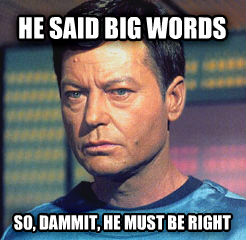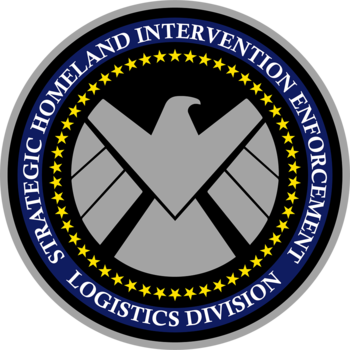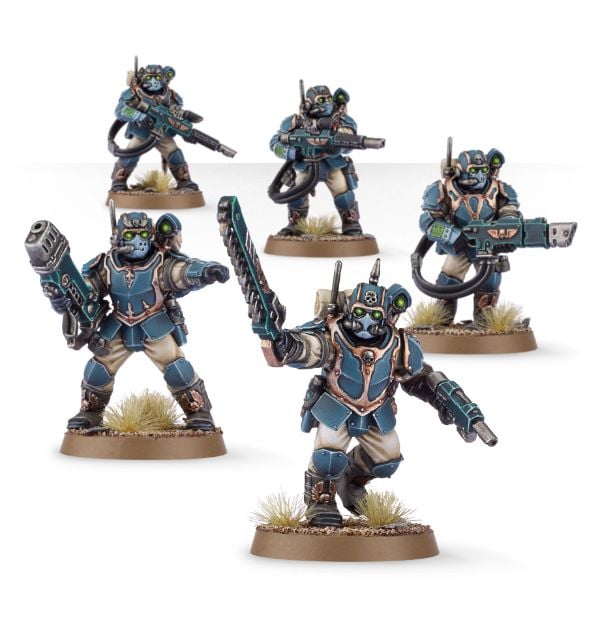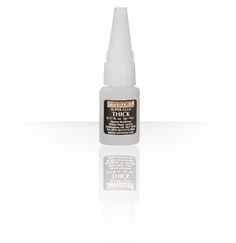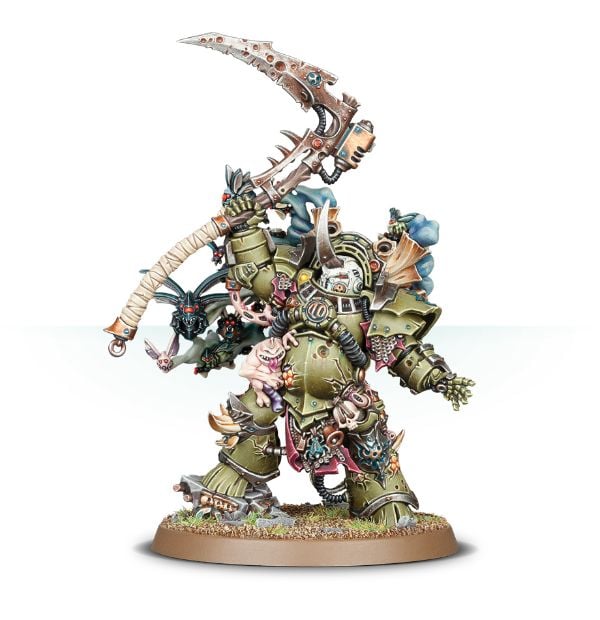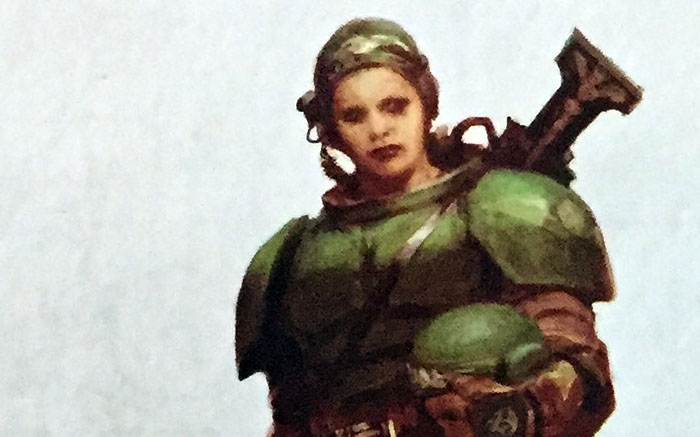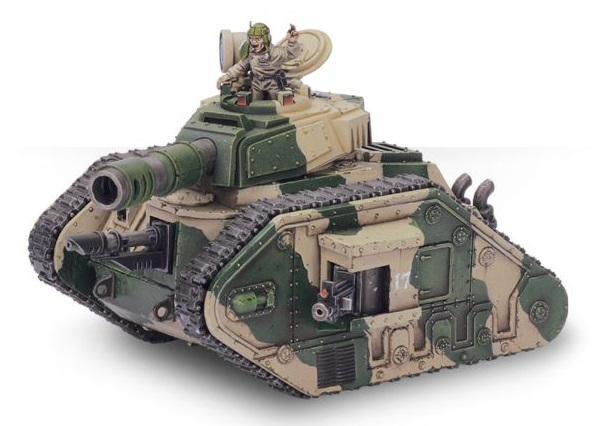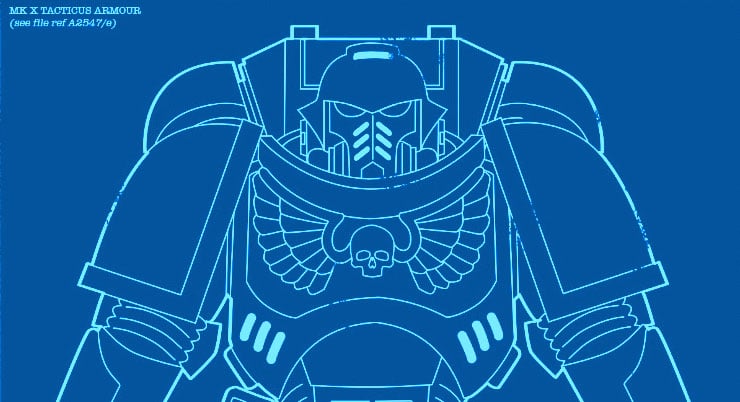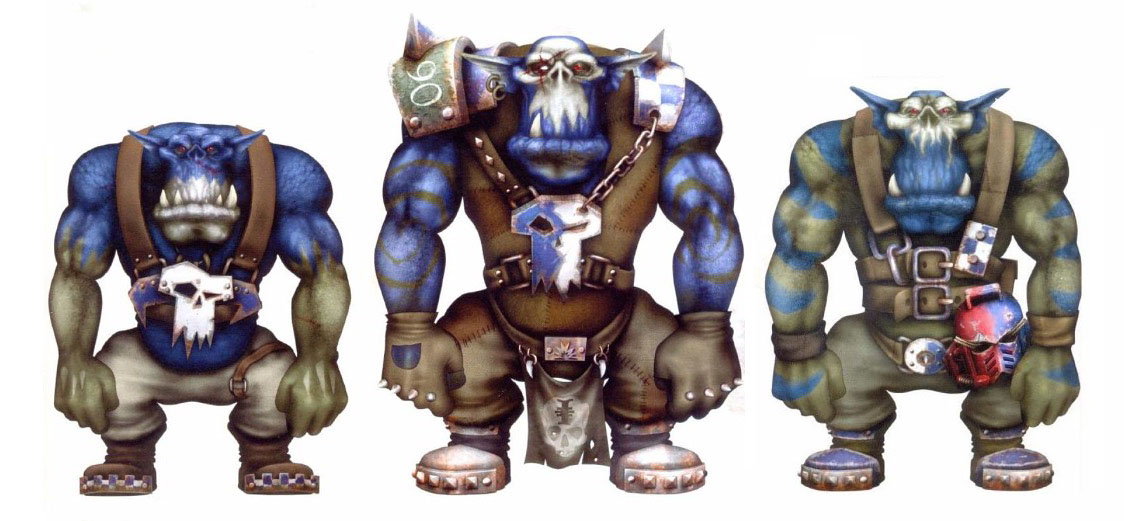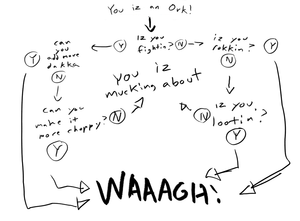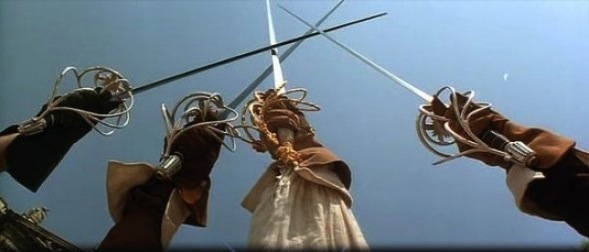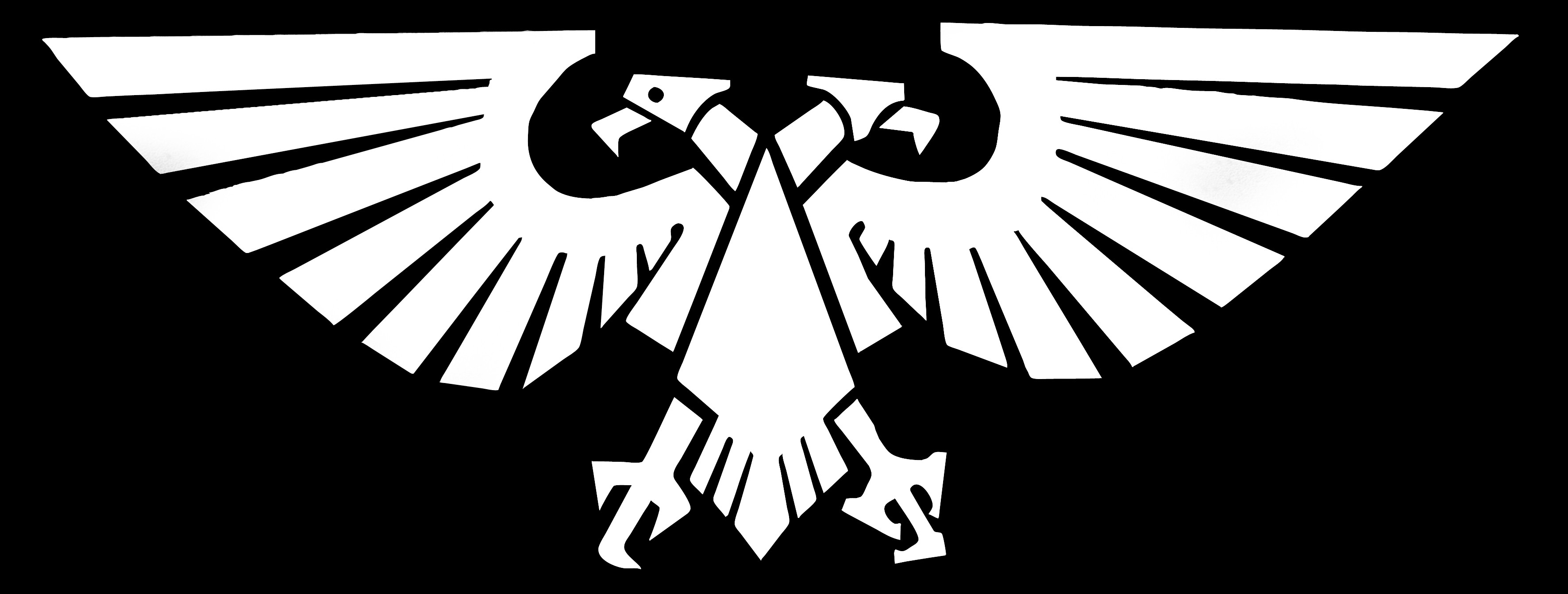40K: Anatomy of A Successful Horde
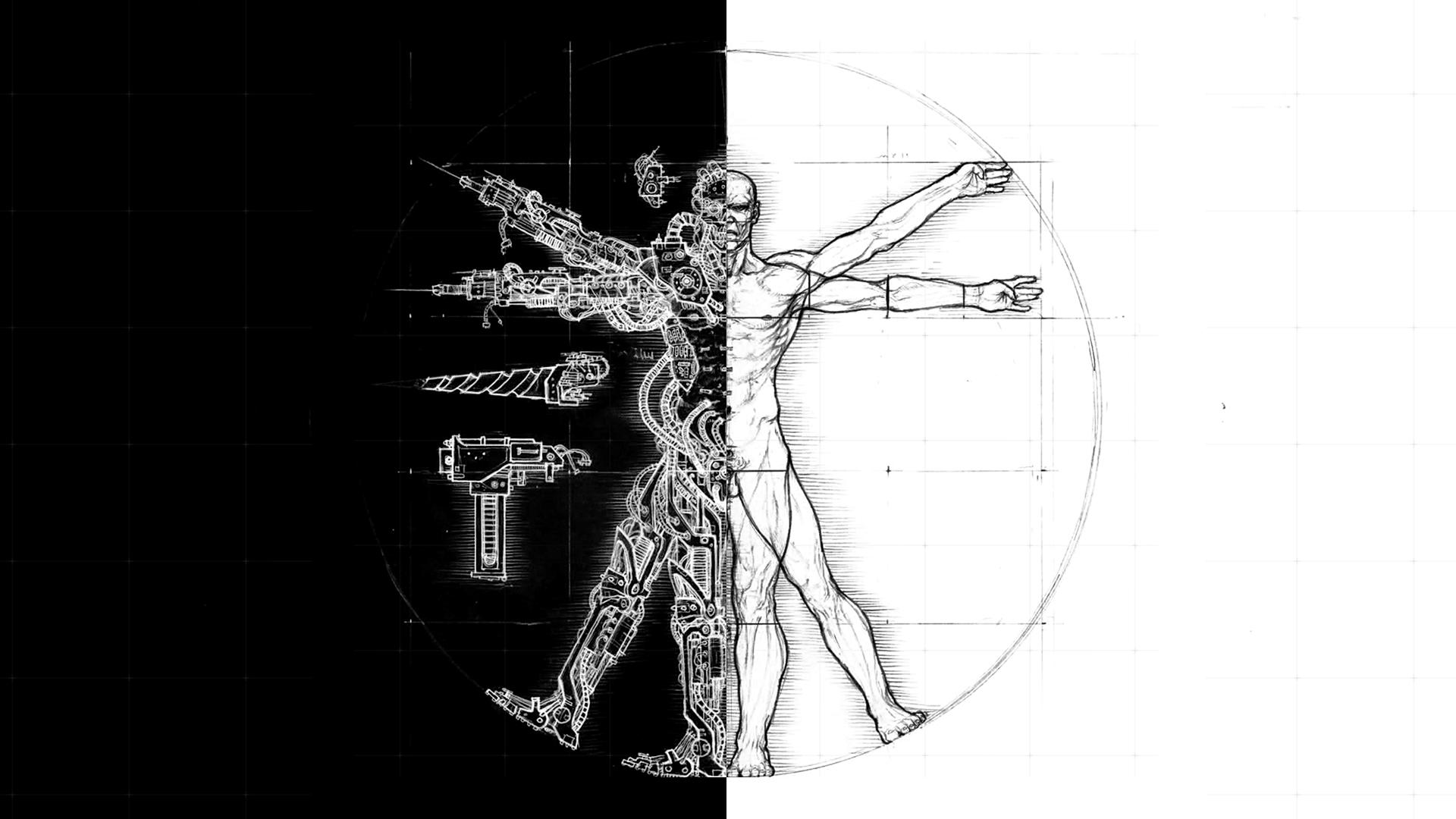

What makes a horde army tick? Let’s take a close look.
It should come as no surprise that I’ve had hordes on my mind lately. What with them dominating the meta and 8th being tailor made for them they are something we’ve all been thinking and talking about a lot. But what really is a horde army? What makes it tick and work, and why are some hordes better than others? Lets take a look at the elements that make up a horde army and how they interact.
Defining Horde
At its simplest a horde army is any army that puts a mass of bodies on the tabletop. Different players may pick different numbers for how many models a horde has to have but for me any army with more than 100 models in it can fairly be called a horde army. This is of course not hard number, an army with 80 models might do just as well, and there need be no upper limit to horde army size. There is however a big difference between a simple horde list and a successful one. A successful horde will have three main elements to it.Those are:
- A large number of cheap models- the Shield
- A combination of units that have a high damage output- the Sword.
- A way of ignoring morale and buffing the Shield- the Glue.
Lets take a look at these elements.
The Shield
The defining element of a horde as we’ve noted is its large number of models. These troops come in many varieties but all tend to cheap but poor quality troops, these are cultists, poxwalkers, conscripts, brimstone horrors, ork boys and the like. They can be taken in a few large units or many smaller units. While individually weak they are able to threaten things through sheer numbers. Damage output however is not their job, their role is to act as board control. They take objectives, block enemy movement and tie enemy units up. They can act as bubble warp for vulnerable units or absorb enemy fire. Alone they won’t win you battles, but they allow the Sword to do its work unhindered.
The Sword
The Sword is the collective term I use for the group of units in your army that actually do most of the killing. Unlike the shield these are powerful units, though often fragile in someway, that have a high damage output. The Sword can be a lot of things, it could be 9 Winged Demon Princes for close combat might, or 10 Malific Lords for smiting or massed Plasma armed Guard Veterans or Leman Russes.
While it may seem less intimidating that the masses of the Shield, the Sword is going to do the heavy lifting of killing your enemy. On the other hand the units of the Sword tend to need protecting by the Shield. Maybe like a Leman Russ they can be rendered ineffective by charging, or like a Malific Lord they need units to protect them from being easily killed by enemy fire. Whatever the case the Shield will work to allow the Sword to do its work for longer.
The Glue
The third part of our mix is the most abstract but it tends to be the element that turns a list from a bunch of models on the table into a really effective army. Now the biggest weakness of large numbers of crappy troops tends to be morale. In general these low quality units suffer from a horrible leadership stat and thus are vulnerable to take huge losses in the morale phase. In order to be effective the army must have a way to ignore or heavily reduce losses from morale. Fortunately most would be horde armies have ways of ignoring morale. From Commissars to the Iron Warriors warlord trait this is an overcomable obstruction.
In addition to ignoring morale the elements that make up the glue should have a way of buffing and improving the damage output and utility of the shield. Whether this is Typhus buffing Poxwalkers or Officers issuing orders to conscripts increasing the power of your Shield units can take your army to the next level.
To Further illustrate how these three elements work together lets look at a horde army that works, and two that don’t.
Example 1: Astra Militarum
Imperial Guard are the poster girls for high powered horde lists in 8th. While conscripts are the stereotypical Shield choice, cheap Infantry Squards with their slightly better Guardswomen are a fine alternative. Either choice will allow you to put a lot of bodies on the table. For a Sword you also have a huge number of options to pick from. For massed smite you could take Primaris Pyskers, or several Leman Russes for heavy firepower. Veterans and grav shooting Tempestus Scions with tons of plasma can also work. Each of these options have weakness that the Shield can guard against and all have a high damage output.
Lastly the IG have great Glue options. Commissars provide the needed morale work around. To get the most out of your Guardswomen you’ve got Priests to give them extra attacks and Officers to issue needed orders, doubling the shooting or combat of your shield makes it a real danger. From start to finish Guard are the perfect horde, they can use all three aspects of a good hordes and they all work together well.
Example 2: Space Marines
On the other end of the spectrum you have Space Marines. While they can technically field a horde army with over a 100 models they lack the needed element of the Shield. Without access to cheap units the Shield and the Sword merge into one and the army as a horde falls apart. Additionally, in order to take so many models they end up having to skimp on upgrades, reducing overall effectiveness. Space Marines are simply too expensive and elite to make a good horde.
Example 3: Orks
On the face of it Orks seem like they should be a great horde army. In many ways they are a quintessential horde, a mass of cheap angry boyz running towards the enemy. And there is no doubt the Orks can form a horde – it’s easy for them to field armies that number in the 100s. Both Boyz and Grots make fine Shield units, getting lots of troops on the table isn’t the weakness. It’s everything else.
Orks tend to lack really great options for their Sword. Their shooting tends to be poor and underwhelming. While they do boast some powerful combat units these tend to work outside of the need for a Shield. In addition, both shooting and combat Swords want to have a lot of models, relying on mass rather than high individual output. This tends to pull resources away from the Shield, weakening the whole.
Lastly while Orks have good ways of getting around morale they lack effective ways of buffing their Shield units. Without this essential Glue the army never achieves its full potential. Though able to field a horde army the lack of a good Sword and Glue hold Orks back from being great.
All For One And One For All
In conclusion it seems clear to me that an effective horde army will combine all three of the elements outlined. By effectively using the Shield, Sword and Glue a horde can reach its full potential. Though many armies can field a horde in terms of sheer numbers without all three elements working in concert they will remain second tier lists. Access or lack of access to units to make up effective formation of these elements ultimately decides what armies can field good hordes and what armies cannot. Hopefully by recognizing these elements you, dear reader, can identify how to not only build a good horde list, but how to counter one.
That’s all for today BOLS fans. Let us know if you agree with my definitions or if you think a horde can do fine without all these elements, down in the comments!

